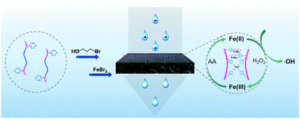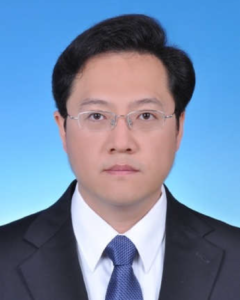We are very pleased to announce the Polymer Chemistry special collection on Sustainable Polymers
This special issue presents the most important developments in these fields in novel synthetic methodology and making use of modern methods such as continuous flow chemistry or energy-efficient photochemical reactions for sustainable polymer synthesis. The Guest Editors for this collection are:
- Professor Antoine Buchard (University of Bath, Belgium)
- Professor Tanja Junkers (Monash University, Australia)
In their Editorial, Guest Editors Antoine Buchard and Tanja Junkers discuss the importance of sustainability in polymers including in areas such as renewable polymers, green synthetic methods, improving polymer properties, degradability, chemical recycling, toxicology impact and design.
The full collection can be found here and we have also highlighted a selection of articles below. We hope you enjoy these, and the rest of the articles included in the collection.
A guide towards safe, functional and renewable BPA alternatives by rational molecular design: structure–property and structure–toxicity relationships
L. Trullemans, S.-F. Koelewijn, I. Scodeller, T. Hendrickx, P. Van Puyvelde and B. F. Sels
Polymer Chemistry, 2021, 12, 5870-5901
Recent developments towards performance-enchancing lignin-based polymers
Garrett F. Bass and Thomas H. Epps, III
Polymer Chemistry, 2021, 12, 4130-4158
Sustainable synthesis of CO2-derived polycarbonates from ᴅ-xylose
David K. Tran, Ahmed Z. Rashad, Donald J. Darensbourg and Karen L. Wooley
Polymer Chemistry, 2021, 12, 5271-5278
Access to high-molecular-weight poly(γ-butyrolactone) by using simple commercial catalysts
Yihuan Liu, Xin Yuan, Jiaqi Wu, Xin Hu, Ning Zhu and Kai Guo
Polymer Chemistry, 2022, 13, 439-445
Novel imino- and aryl-sulfonate based photoacid generators for the cationic ring-opening polymerizarion of ε-caprolactone
Xabier Lopez de Pariza, Erick Cordero Jara, Nicolas Zivic, Fernando Ruipérez, Timothy E. Long and Haritz Sardon
Polymer Chemistry, 2021, 12, 4035-4042
Renewable and recyclable covalent adaptable networks based on bio-derived lipoic acid
Maher A. Alraddadi, Viviane Chiaradia, Connor J. Stubbs, Joshua C. Worch and Andrew P. Dove
Polymer Chemistry, 2021, 12, 5796-5802
All the articles in the collection are currently FREE to read until 2 May 2022!















